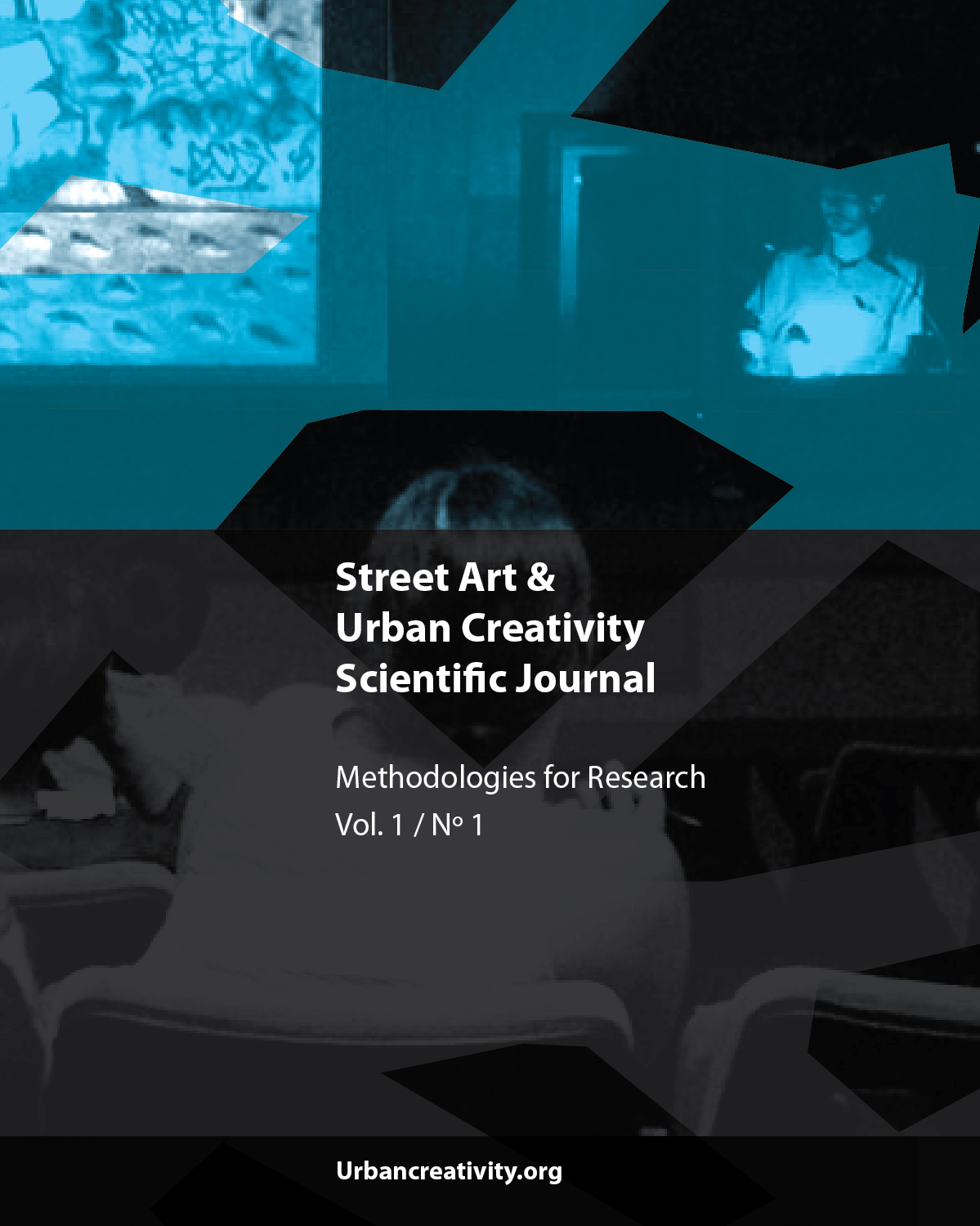Street Art and related terms
discussion and working definition
DOI:
https://doi.org/10.25765/sauc.v1i1.14Keywords:
Street Art, Urban Art, Graffiti, Working Definition, Overview, Summary, TermsAbstract
This paper gives a short introduction and discussion of the term Street Art and related terms like Graffiti and Urban Art. A major part discusses my definition of Street Art and other definitions and the differences and commonalities of these terms. Street Art consists of self-authorized pictures, characters, and forms created in or applied to surfaces in the urban space that intentionally seek communication with a larger circle of people. Street Art is done in a performative and often site-specific, ephemeral, and participatory manner. Street Art is mostly viewed online. It differs from Graffiti and Public Art. I quote first and foremost German researchers that are not translated into English but in my opinion should be part of the international academic discussion
Downloads
Global Statistics ℹ️
|
299
Views
|
170
Downloads
|
|
469
Total
|
|
Downloads
Published
How to Cite
Issue
Section
License
Copyright (c) 2015 Street Art & Urban Creativity

This work is licensed under a Creative Commons Attribution-NoDerivatives 4.0 International License.
Those authors who publish in this journal accept the following terms:
-
Authors retain copyright.
-
Authors transfer to the journal the right of first publication. The journal also owns the publishing rights.
-
All published contents are governed by an Attribution-NoDerivatives 4.0 International License.
Access the informative version and legal text of the license. By virtue of this, third parties are allowed to use what is published as long as they mention the authorship of the work and the first publication in this journal. If you transform the material, you may not distribute the modified work. -
Authors may make other independent and additional contractual arrangements for non-exclusive distribution of the version of the article published in this journal (e.g., inclusion in an institutional repository or publication in a book) as long as they clearly indicate that the work was first published in this journal.
- Authors are allowed and recommended to publish their work on the Internet (for example on institutional and personal websites), following the publication of, and referencing the journal, as this could lead to constructive exchanges and a more extensive and quick circulation of published works (see The Effect of Open Access).













